六年级英语上册Unit6
- 格式:ppt
- 大小:2.25 MB
- 文档页数:32
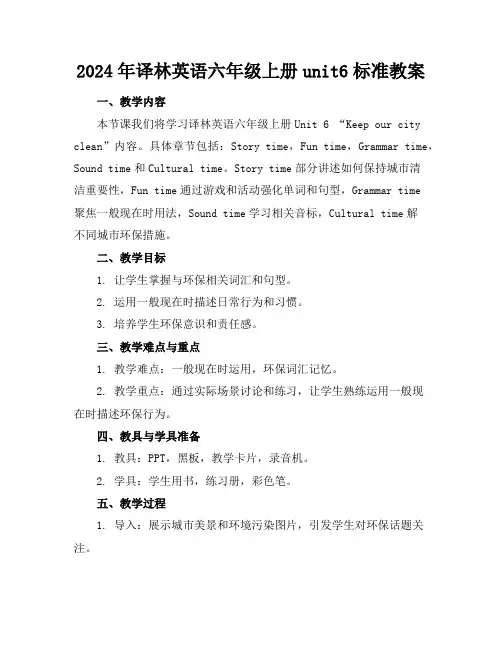
2024年译林英语六年级上册unit6标准教案一、教学内容本节课我们将学习译林英语六年级上册Unit 6 “Keep our city clean”内容。
具体章节包括:Story time,Fun time,Grammar time,Sound time和Cultural time。
Story time部分讲述如何保持城市清洁重要性,Fun time通过游戏和活动强化单词和句型,Grammar time聚焦一般现在时用法,Sound time学习相关音标,Cultural time解不同城市环保措施。
二、教学目标1. 让学生掌握与环保相关词汇和句型。
2. 运用一般现在时描述日常行为和习惯。
3. 培养学生环保意识和责任感。
三、教学难点与重点1. 教学难点:一般现在时运用,环保词汇记忆。
2. 教学重点:通过实际场景讨论和练习,让学生熟练运用一般现在时描述环保行为。
四、教具与学具准备1. 教具:PPT,黑板,教学卡片,录音机。
2. 学具:学生用书,练习册,彩色笔。
五、教学过程1. 导入:展示城市美景和环境污染图片,引发学生对环保话题关注。
2. 新课内容呈现:通过Story time,让学生解保持城市清洁重要性。
结合Fun time,以游戏形式学习环保词汇和句型。
3. 例题讲解:讲解Grammar time中一般现在时,结合实际例子进行讲解。
4. 随堂练习:让学生运用一般现在时,描述自己在生活中为环保所做事情。
5. 小组讨论:分组讨论如何保持城市清洁,每组提出至少三条建议。
六、板书设计1. Keep our city clean2. 主要词汇:rubbish, bin, recycle, save, water, electricity3. 句型: What can we do to keep our city clean? We can4. 一般现在时结构:主语 + 动词原形七、作业设计1. 作业题目:(1)根据板书,用一般现在时描述你为环保做事情。
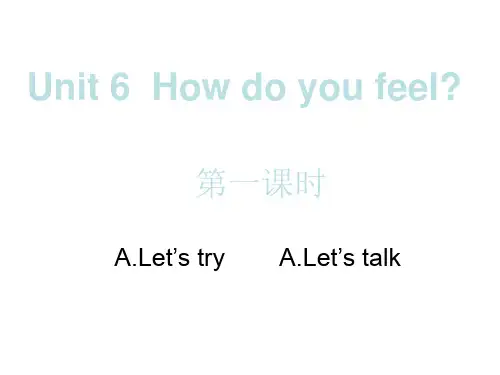

沪教(一起)6A Unit 6 Going to school 知识点总结1.traveling time to school 去学校行走时间2.it takes sb. some time to do sth. 某人花一段时间做某事3.It takes him about ten minutes. 他花大约十分钟。
4.half an hour 半小时5.go to sp. by ferry 乘渡船去某地6.go to school on foot=walk to school 步行去学校7.how long 多久8.get to sp. 到达某地9.get to the supermarket 到达超市10.g et there/here/home 到达那儿/这儿/家里11.a restaurant 一个饭店12.a hotel 一个旅馆13.a n advertisement board 一块广告牌14.a few + c.n. 几个;一些(后跟可数名词复数)15.a lot of + c.n. & u.n. 许多(后跟可数名词复数或不可数名词)16.o n one’s way to school 在某人去某地的路上17.o n my way to school 在我去学校的路上18.b y light rail 乘轻轨19.d epartment stores 百货商店20.g o to kindergarten 上幼儿园语言点1. near 离…很近后面直接接地点I live near school.=My home is near school.我家离学校很近。
2. far away from=far from离…很远He lives far away from school.=His home is far from school.他家离学校很远3.by bus/bike/car/underground/train/ferry动词短语:take a bus/bike/car/underground/train/ferry ride a bikeHe goes to school by bus.=He takes a bus to school.4. on foot 动词:walkShe goes to work on foot every day.=She walks to work every day.5. It takes sb. some time to do sth. 花费某人多少时间做某事。
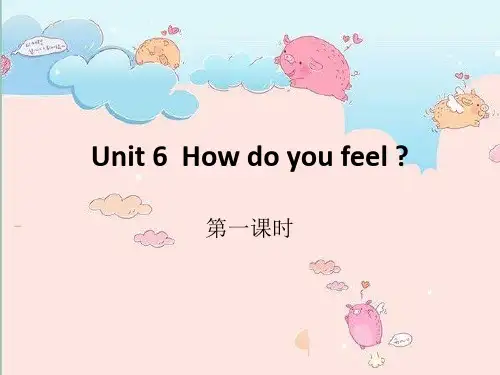
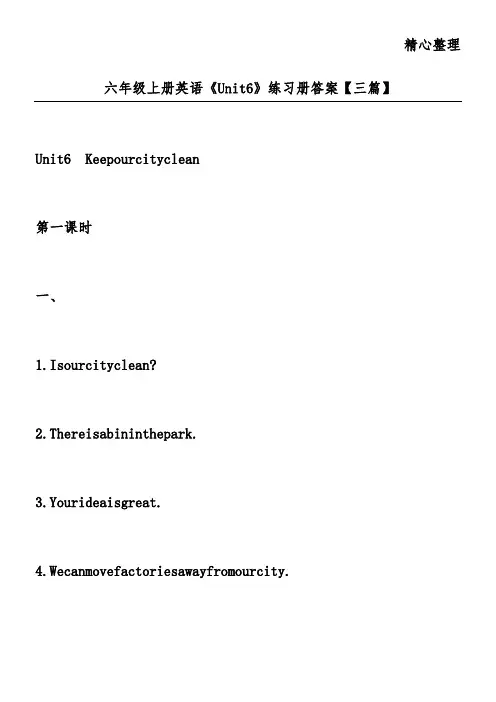

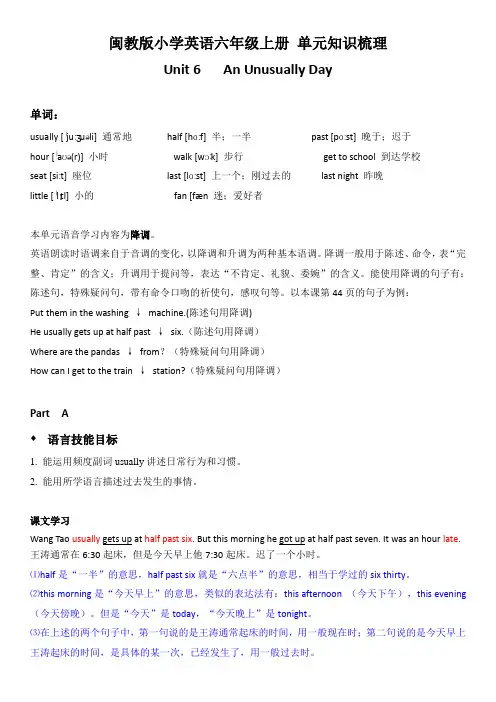
闽教版小学英语六年级上册单元知识梳理Unit 6 An Unusually Day单词:usually [ˈjuːʒuəli] 通常地half [hɑːf] 半;一半past [pɑːst] 晚于;迟于hour [ˈaʊə(r)] 小时walk [wɔːk] 步行get to school 到达学校seat [siːt] 座位last [lɑːst] 上一个;刚过去的last night 昨晚little [ˈlɪtl] 小的fan [fæn 迷;爱好者本单元语音学习内容为降调。
英语朗读时语调来自于音调的变化,以降调和升调为两种基本语调。
降调一般用于陈述、命令,表“完整、肯定”的含义;升调用于提问等,表达“不肯定、礼貌、委婉”的含义。
能使用降调的句子有:陈述句,特殊疑问句,带有命令口吻的祈使句,感叹句等。
以本课第44页的句子为例:Put them in the washing ↓machine.(陈述句用降调)He usually gets up at half past ↓six.(陈述句用降调)Where are the pandas ↓from?(特殊疑问句用降调)How can I get to the train ↓station?(特殊疑问句用降调)Part A◆语言技能目标1. 能运用频度副词usually讲述日常行为和习惯。
2. 能用所学语言描述过去发生的事情。
课文学习Wang Tao usually gets up at half past six. But this morning he got up at half past seven. It was an hour late. 王涛通常在6:30起床,但是今天早上他7:30起床。
迟了一个小时。
⑴half是“一半”的意思,half past six就是“六点半”的意思,相当于学过的six thirty。
⑵this morning是“今天早上”的意思,类似的表达法有:this afternoon (今天下午),this evening (今天傍晚)。
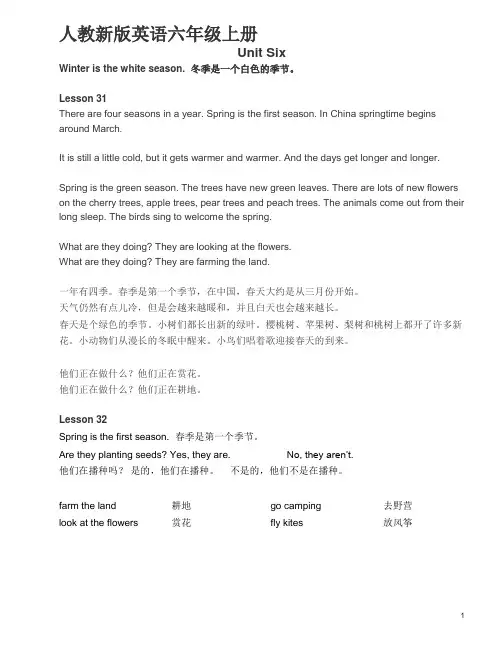
人教新版英语六年级上册Unit SixWinter is the white season. 冬季是一个白色的季节。
Lesson 31There are four seasons in a year. Spring is the first season. In China springtime begins around March.It is still a little cold, but it gets warmer and warmer. And the days get longer and longer.Spring is the green season. The trees have new green leaves. There are lots of new flowers on the cherry trees, apple trees, pear trees and peach trees. The animals come out from their long sleep. The birds sing to welcome the spring.What are they doing? They are looking at the flowers.What are they doing? They are farming the land.一年有四季。
春季是第一个季节,在中国,春天大约是从三月份开始。
天气仍然有点儿冷,但是会越来越暖和,并且白天也会越来越长。
春天是个绿色的季节。
小树们都长出新的绿叶。
樱桃树、苹果树、梨树和桃树上都开了许多新花。
小动物们从漫长的冬眠中醒来。
小鸟们唱着歌迎接春天的到来。
他们正在做什么?他们正在赏花。
他们正在做什么?他们正在耕地。
Lesson 32Spring is the first season. 春季是第一个季节。
Are they planting seeds? Yes, they are. No, they aren’t.他们在播种吗?是的,他们在播种。
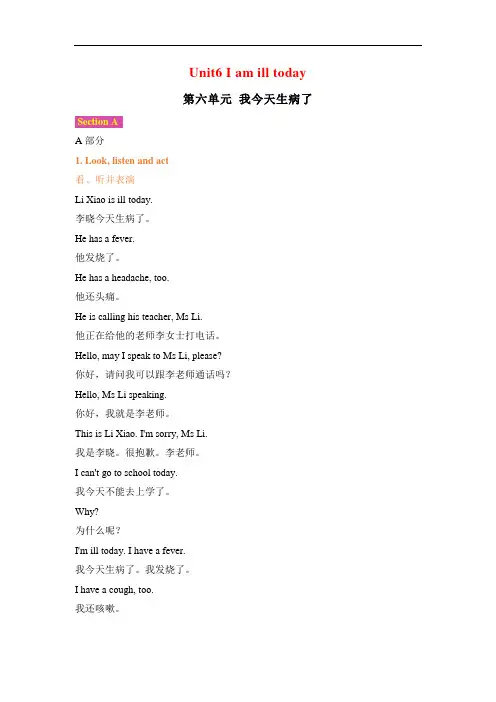
Unit6 I am ill today第六单元我今天生病了Section AA部分1. Look, listen and act看、听并表演Li Xiao is ill today.李晓今天生病了。
He has a fever.他发烧了。
He has a headache, too.他还头痛。
He is calling his teacher, Ms Li.他正在给他的老师李女士打电话。
Hello, may I speak to Ms Li, please?你好,请问我可以跟李老师通话吗?Hello, Ms Li speaking.你好,我就是李老师。
This is Li Xiao. I'm sorry, Ms Li.我是李晓。
很抱歉。
李老师。
I can't go to school today.我今天不能去上学了。
Why?为什么呢?I'm ill today. I have a fever.我今天生病了。
我发烧了。
I have a cough, too.我还咳嗽。
I'm sorry to hear that.听到这消息我很难过,Do you have a headache?你头痛吗?Yes, I do.是的。
Oh dear, you are very ill.哦,亲爱的,你病得很严重。
Please stay home and rest.请待在家里休息吧。
Thank you. Goodbye, Ms Li. 谢谢你。
再见,李老师。
Goodbye and take care.再见,保重身体。
2. Listen and say听和说I'm ill.我生病了。
Do you have a headache?你头痛吗?Yes. I have a headache.是的。
我头痛。
ill 生病的fever 发烧speak 说话cough 咳嗽headache 头痛hear 听到3. Listen, tick and match听录音,勾出正确答案,并搭配What’s the matter with the kids?孩子们怎么了?Zhou Lin, are you doing your homework? 周林,你在做作业吗?No, Mom. I can’t study. I’m ill.不,妈妈。
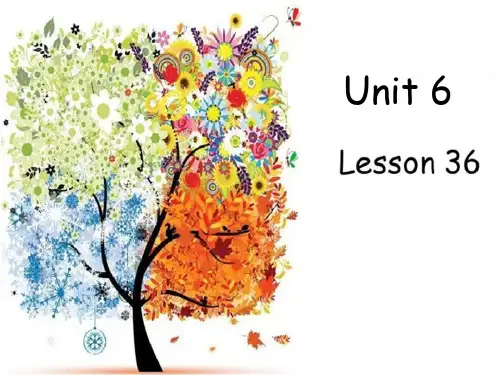
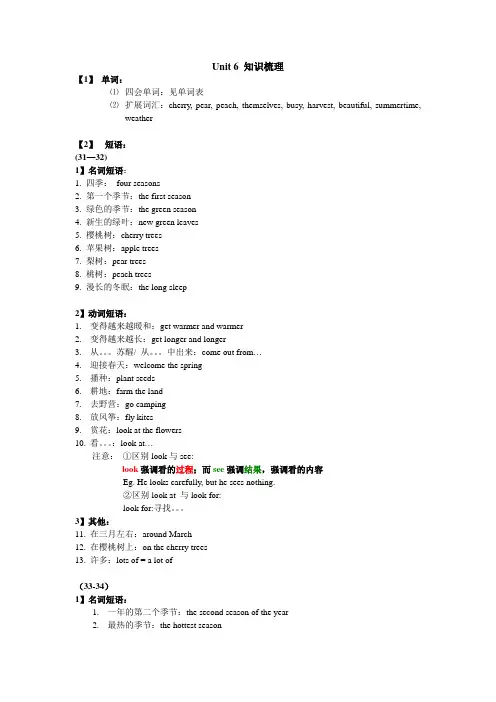
Unit 6 知识梳理【1】单词:⑴四会单词:见单词表⑵扩展词汇:cherry, pear, peach, themselves, busy, harvest, beautiful, summertime,weather【2】短语:(31—32)1】名词短语:1. 四季:four seasons2. 第一个季节:the first season3. 绿色的季节:the green season4. 新生的绿叶:new green leaves5. 樱桃树:cherry trees6. 苹果树:apple trees7. 梨树:pear trees8. 桃树:peach trees9. 漫长的冬眠:the long sleep2】动词短语:1.变得越来越暖和:get warmer and warmer2.变得越来越长:get longer and longer3.从。
苏醒/ 从。
中出来:come out from…4.迎接春天:welcome the spring5.播种:plant seeds6.耕地:farm the land7.去野营:go camping8.放风筝:fly kites9.赏花:look at the flowers10.看。
:look at…注意:①区别look与see:look强调看的过程;而see强调结果,强调看的内容Eg. He looks carefully, but he sees nothing.②区别look at 与look for:look for:寻找。
3】其他:11.在三月左右:around March12.在樱桃树上:on the cherry trees13.许多:lots of = a lot of(33-34)1】名词短语:1.一年的第二个季节:the second season of the year2.最热的季节:the hottest season2】动词短语:1.去海滩:go to the beach2.玩得高兴:enjoy oneself= have a good time例句:主语为单数:我玩得高兴。
6AUnit 6 Keep our city clean 单元知识归纳短语积累1.keep our city clean 保持我们的城市干净2. these pictures of our city这些我们城市的图片3. smoke from cars汽车的尾气4.make the air dirty使空气变脏5.black smoke from factories工厂里的黑烟6.messy and dirty又乱又脏7. take the metro to school=go to school by metro乘地铁上学8.dead fish 死鱼9. walk to school=go to school on foot 步行上学10. move some factories away把工厂搬走11. put rubbish in the bin把垃圾放进垃圾桶12.plant more trees种植更多的树13.help keep the air clean(help后的动词省略to) 有助于净化空气14.your ideas你们的主意15.well done干得好17 sweep the floor 扫地18.by the river在小河边19.throw rubbish扔垃圾20. on the floor 在地上21..walk home=go home on foot步行回家22.after school放学后23.like living in the city喜欢住在城市24. many museums 许多博物馆25. throw a banana skin on the ground把香蕉皮扔在地上26. slip on the banana skin滑倒在香蕉皮上27. go to the hospital去医院看病see the doctor看医生28. pick it up把它捡起pick them up(把他们捡起)29. in the water在水里30. clean and beautiful又干净又漂亮31. do that那样做32. too late 太迟了33. go to hospital 去医院(看病)重点句子1. What makes the air dirty? 什么使空气变脏?Smoke makes the air dirty.烟雾使空气变脏。
Unit 6 Keep our city clean 知识汇总一、【词组与短语】1. keep our city clean 让我们的城市保持整洁2. pictures of our city 我们城市的图片3. make the air dirty 使空气变脏4. make our city dirty 使得我们的城市变脏5. smoke from cars 从汽车里冒出的烟6. black smoke from factories 来自工厂的黑烟7. messy and dirty 又脏又乱8. be dead 死亡9. in the water 在水里10. take the bus/ the metro…乘坐公交/地铁11. take the+交通工具to school 乘……去上学12. walk to school 步行去学校13. move …away from 从……搬走14. put rubbish in the bin 将垃圾放进垃圾桶15. plant more trees种植更多的树16. help do sth. 帮着做某事17. your ideas 你们的主意18. well done 干得好,做得好19. sweep the floor 扫地20. clean the desks and chairs 擦桌椅21. throw rubbish on the floor 将垃圾扔在地上22. walk home 步行回家23. after school 放学后24. live in the city 住在城市里25. many museums 许多博物馆26. clean and beautiful 又干净又漂亮27. a banana skin 一块香蕉皮28. on the ground 在地上29. pick …up 捡起,拾起30. do that 那样做31. too late 太晚了32. slip on …滑倒在……上33. go to hospital 去医院看病34. I’m sorry 我很抱歉二、【语法知识点】1. make+复合宾语(名词或代词+形容词)表示“使……变得……”。
初中英语学习材
料
madeofjingetieji
Unit6
一、单词
1、铅笔
2、书
3、橡皮
4、箱子;盒
5、铅笔盒
6、书包
7、词典
8、我的
9、她的
10、原谅
11、我12、劳驾
13、感谢;谢谢
14、老师
15、关于
16、怎么样
17、你的;你们的
18、为了;给
19、为……而感谢
20、帮助
21、受欢迎的
22、别客气
23、棒球
24、手表
25、游戏;运动
26、卡片
27、学生证
28、笔记本
29、戒指
30、包
31、在……里
32、图书馆
33、请求;询问
34、请求…恳求
35、找到;发现
36、一些
37、教室
38、电子邮件
39、给…打电话
40、遗失
41、必须
42、一套;一组
43、女儿
44、妈妈
45、家;家庭46、堂兄
47、叔父
48、照片
49、照片
50女孩
二、句子
1、那是你的书包?
不,它是他的。
2、这些是你的书吗?
3、劳驾,这是你的铅笔吗?
4、那些是我的铅笔吗?
5、这绿色铅笔是他的。
6、谢谢你的帮助。
7、那些是他的钥匙吗?是的。
8、你怎样拼写它?
9、电脑游戏在校图书馆里。
10、向老师要它。
11、我丢失了我的身份证。
12、我必须找到它。
13、给我打这个电话686-6034. 14、一串钥匙
15、这件夹克衫是我的。
Unit 6 Keep our city cleanI.phrases:1. make the air dirty使空气变脏2. many museums很多博物馆3. come back回来4. the dead fish死鱼5. walk home步行回家6. plant more trees种更多的树7. keep our city clean保持我们的城市整洁8. these pictures of our city我们城市的这些照片9. take the bus and the metro to school搭公车和地铁去上学10. move some factories away from our city把一些工厂从我们的城市搬走11. put rubbish in the bin把垃圾扔在垃圾桶内12. keep our city clean保持我们的城市于净13. black smoke from factories工厂排出的黑烟14 help sb. do sth 帮助某人做某事15. help keep the air clean有助于保持空气的洁净16. make the streets messy and dirty使街道变得脏乱17. go to hospital去医院18. great ideas好主意19. well done干得棒20. pick it up把它捡起来21 a messy street一条肮脏的街道22. fly away飞走23. throw a banana skin on the ground把香蕉皮扔在地上24 slip on the banana skin and fall踩着香蕉皮而摔倒II. Sentences1. Black smoke from factories makes the air dirty.排出的黑烟把空气变脏了。
沪教(一起)6A Unit 6 Going to school 知识点总结1.traveling time to school 去学校行走时间2.it takes sb. some time to do sth. 某人花一段时间做某事3.It takes him about ten minutes. 他花大约十分钟。
4.half an hour 半小时5.go to sp. by ferry 乘渡船去某地6.go to school on foot=walk to school 步行去学校7.how long 多久8.get to sp. 到达某地9.get to the supermarket 到达超市10.g et there/here/home 到达那儿/这儿/家里11.a restaurant 一个饭店12.a hotel 一个旅馆13.a n advertisement board 一块广告牌14.a few + c.n. 几个;一些(后跟可数名词复数)15.a lot of + c.n. & u.n. 许多(后跟可数名词复数或不可数名词)16.o n one’s way to school 在某人去某地的路上17.o n my way to school 在我去学校的路上18.b y light rail 乘轻轨19.d epartment stores 百货商店20.g o to kindergarten 上幼儿园语言点1. near 离…很近后面直接接地点I live near school.=My home is near school.我家离学校很近。
2. far away from=far from离…很远He lives far away from school.=His home is far from school.他家离学校很远3.by bus/bike/car/underground/train/ferry动词短语:take a bus/bike/car/underground/train/ferry ride a bikeHe goes to school by bus.=He takes a bus to school.4. on foot 动词:walkShe goes to work on foot every day.=She walks to work every day.5. It takes sb. some time to do sth. 花费某人多少时间做某事。